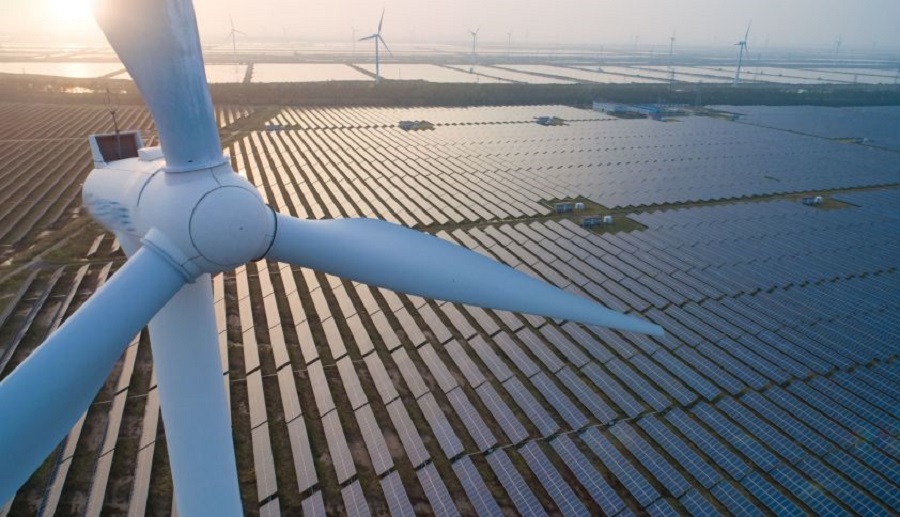RIO DE JANEIRO, BRAZIL – With the urgency to fight climate change, renewable energies have been gaining ground in public debate. Increasingly more countries are announcing plans to expand the use of renewable sources in their energy matrix, in the so-called energy transition.
The goal is to reduce the share of fossil fuels – natural gas, coal, and oil – which emit carbon dioxide when used to generate energy.

Since society’s demand for energy would not drop together with the reduction in the use of these fuels, more environmentally friendly substitutes must be found, and that is where renewable energies come in.
Brazil is one of the reference countries in the use of renewable sources in its electricity matrix. The Ministry of Mines and Energy’s 2020 data indicate that a little over 80% of the matrix is renewable, with hydropower still dominating.
WHAT IS A RENEWABLE ENERGY?
According to IEE-USP professor Virgina Parente, the most common definition for a renewable source is that it “does not change and is not lost” when generating energy. However, this would not apply to biomass, for instance, or to the water used in hydroelectric plants.
Therefore, according to the expert, the most accurate definition for this group is “a source that is used at a slower rate than nature can replenish over the human lifespan. This is called the sustainability rate, and it guarantees that, while there is demand, the source will not be exhausted.”
In other words, the definition of a renewable source depends on the context. Sugarcane bagasse is one of the main forms of biomass used to generate energy, but if its use were to become so intense that sugarcane could not be planted anywhere, the source would be exhausted at some point and, therefore, would no longer be renewable.
Furthermore, Parente states that being a renewable energy is not synonymous with being a clean energy source. First, she says, “there is no such thing as a clean energy source today” if the definition is taken literally.
For the source to be clean, it must not emit pollutant gases not only in energy generation, but in all stages of the process, from the manufacturing of the equipment used in generation, in the transportation of the source, and in the disposal of the waste produced.
“There is no energy generation technology that does not have a negative environmental or social external impact. There are only energies that do not emit greenhouse gases at the time of generation, and renewable energies tend to emit much less, or no greenhouse gases at all, in the production of energy,” she says.
The main exception in this area is nuclear energy. The generation process depends on uranium, which is enriched and whose atoms are separated to generate energy, in the nuclear fission process.
Because it is an ore, uranium has a slower replacement rate in nature than its use, and therefore nuclear energy is not renewable, but it is clean at the time of generation. All fossil fuels are non-renewable and “dirty.”
RENEWABLE ENERGIES IN BRAZIL
The latest aggregate data on Brazil’s electric and energy matrices were released in 2021, with reference to the year 2020. In the electricity matrix, the hydraulic source accounted for 65.2%, followed by biomass (9.1%), wind (8.8%), natural gas (8.3%) and others.
The energy matrix is less renewable, since in this case any type of energy generation is considered, including vehicle fuels. Thus, the most used is petroleum and derivatives (33.1%), followed by sugar cane derivatives (19.1%) and hydro (12.6%).
However, in both cases, the share of renewable energy is higher than the global measure. A survey by the International Energy Agency (IEA) points out that in 2019 renewable energies accounted for about 25% of the global electricity matrix, and less than 15% of the energy matrix. In the Brazilian case, the share is 83% and 46%, respectively.
The hydraulic source, with hydroelectric plants, has dominated the electricity matrix for many years, but solar and wind sources have been gaining ground as their costs have fallen, reflecting Brazil’s high potential. It is expected that by 2021 both will have grown, in the wake of the water crisis.
Among renewable sources, ocean energy and green hydrogen are only used in experimental projects. This is due to high costs and lack of technology, but the country has great potential in both areas.
The only renewable energy impossible in Brazil is geothermal, as it can only be used in places with volcanic activity or where plates meet, which is not the case in the country.

